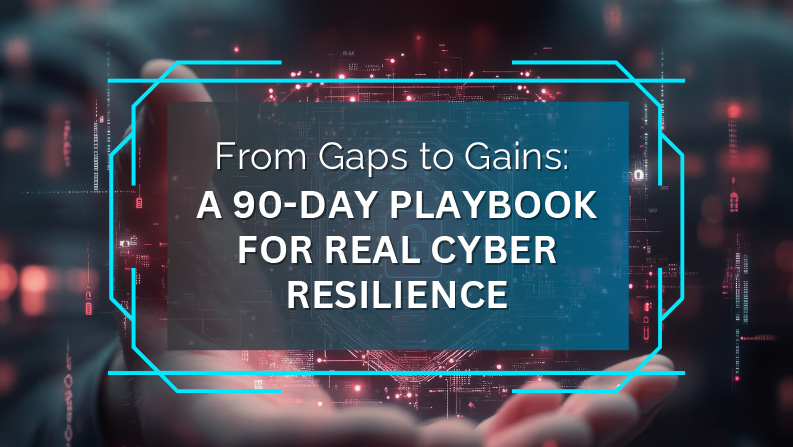Practical Cyber Resilience: A 90-Day Kickstart That Actually Moves the Needle
Most small to mid-sized companies don’t ignore cybersecurity—they invest in firewalls, endpoint protection, and employee training to some extent. The question isn’t whether you’ve done something. The question is: have you done enough to recover when—not if—something goes wrong?
If you’re running cloud-based systems, tied to suppliers, and working with shared credentials and informal workarounds in the background—you already know the risks are real. The problem isn’t awareness. The problem is structure.
There is a practical solution to fix that.
Start Where It Counts: Resilience > Checklists
This isn’t about writing perfect policies or building a binder to check boxes for your supplier audits. This is about making sure your business can take a punch and keep moving.
Forget boiling the ocean. You don’t need a 200-page disaster recovery plan on day one. But you do need a clear, 90-day roadmap to build real resilience—with each step delivering value you can feel.
The First 90 Days: Gain Visibility & Identify Gaps
- Run a Practical Risk Assessment (Week 1–2)
You can’t protect what you don’t understand.
- Identify your top 5–10 business-critical systems.
- Map who depends on them (internal and external).
- Review which systems have real-time backups and which don’t.
- Review shared credentials—this is a liability waiting to happen.
- Meet with Key Staff (Week 2–3)
Talk with operations, finance, IT, and customer-facing teams.
Ask: “If this system went down, what would you do?”
The answers will tell you where the real pain points are.
- Score Your Resilience (Week 4)
- Use a simple red/yellow/green scale for each critical function.
- Don’t obsess over perfection—focus on clarity.
- Document your top 3 gaps and how they’d impact the business.
Days 91–180: Build Lightweight, Effective Plans
- Draft a One-Page Business Impact Plan (Week 13)
- List critical systems, recovery goals (e.g. “must be up in 2 hours”), and fallback processes.
- Add one owner per system. That’s it.
- Establish an Incident Response Call Tree (Week 14–15)
- Who gets called first, second, third in a breach?
- How do you communicate internally and externally?
- Keep this printable and test it once.
- Run a Tabletop Drill (Week 16–17)
Pick a real-world scenario (e.g. ransomware locks your ERP).
Walk through: What do we do? Who decides? How long until we’re back up?
Days 181–270: Strengthen and Sustain
- Close Top Gaps
- Replace shared credentials with role-based access.
- Automate backup verification on your critical systems.
- Push quick training refreshers out to staff on evolving phishing tactics.
- Report & Reassess
- Review what changed in your tech stack or supplier relationships.
- Re-score your resilience with the same method from Month 1.
- Share the progress—internally and with suppliers if required.
- Formalize What’s Working
- Promote your 1-page plans into living documents.
- Update quarterly. Keep them simple. Keep them visible.
Resilience is Built, Not Bought
You don’t need to spend hundreds of hours in committee to build cyber resilience. You need to start, commit, and deliver meaningful progress every quarter.
Do that, and you won’t just survive audits—you’ll be able to demonstrate to your suppliers, partners, and customers:
“We’ve built a plan that’s tested, practical, and part of how we operate—every day.”





